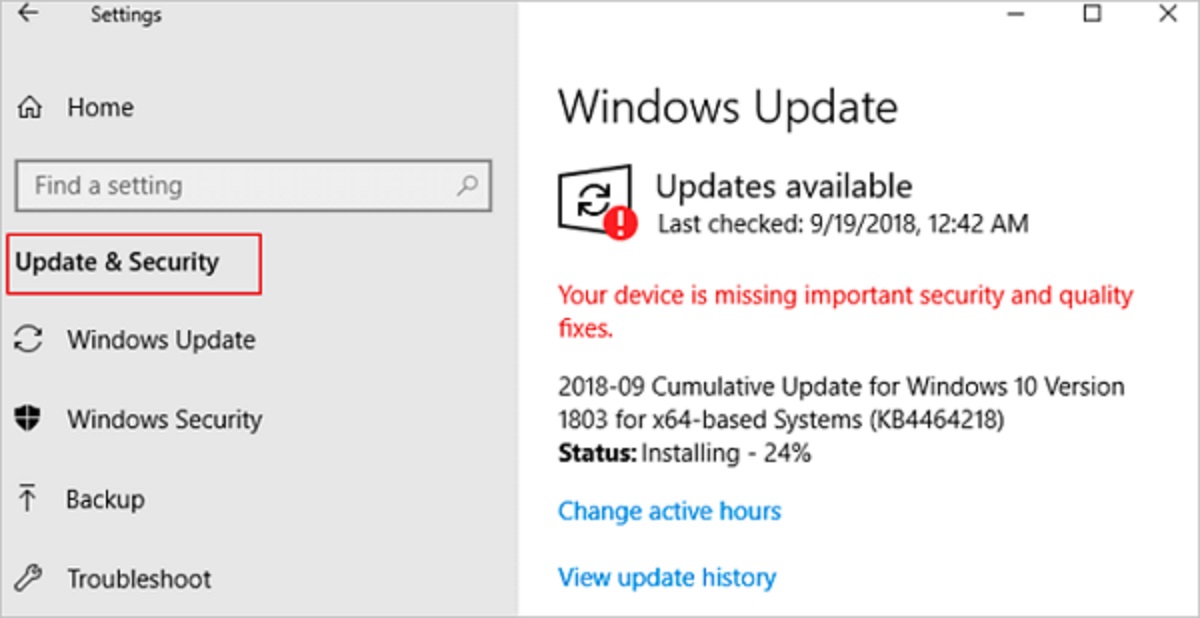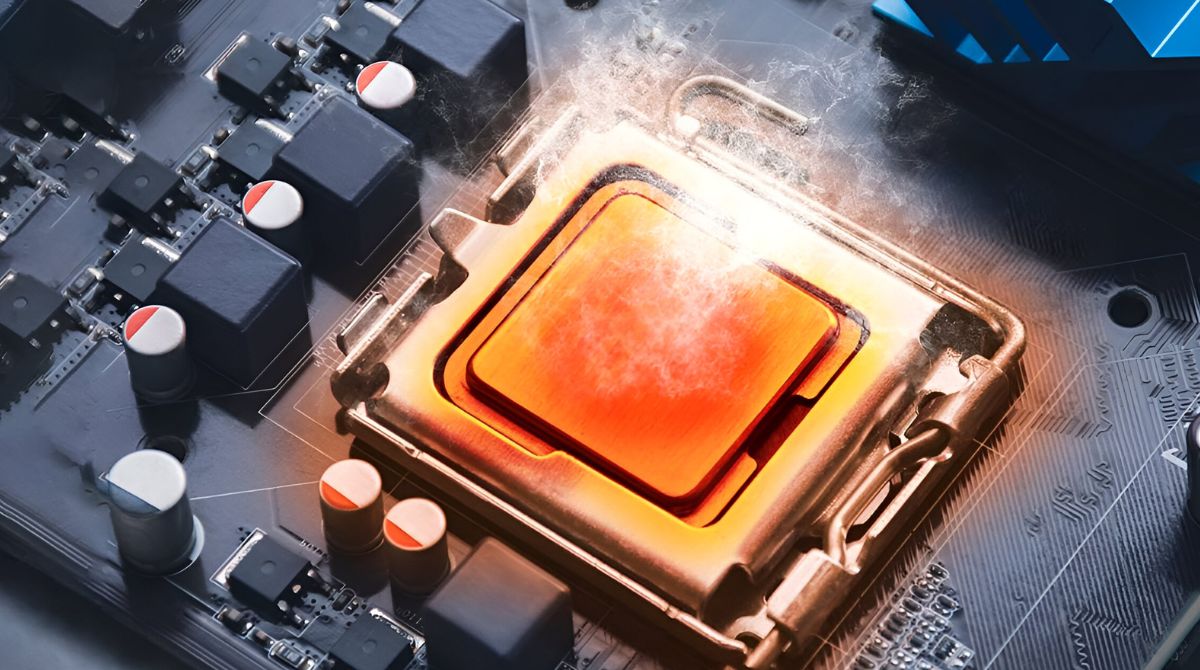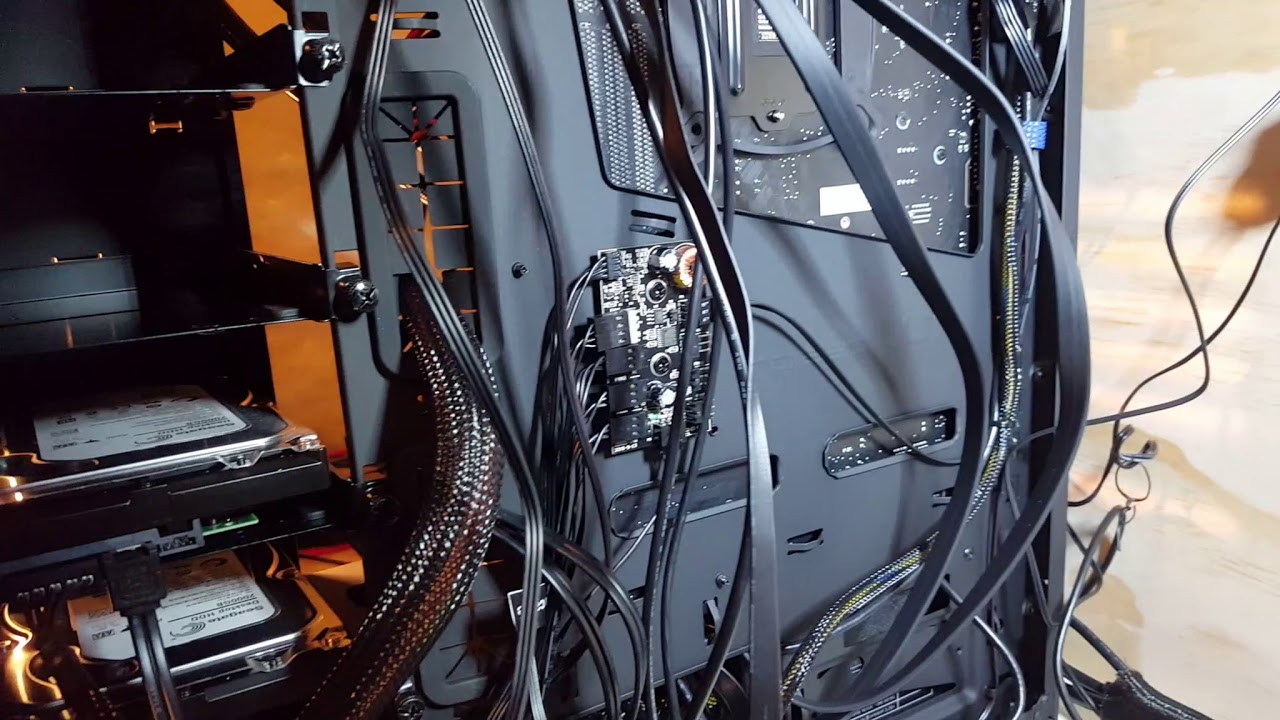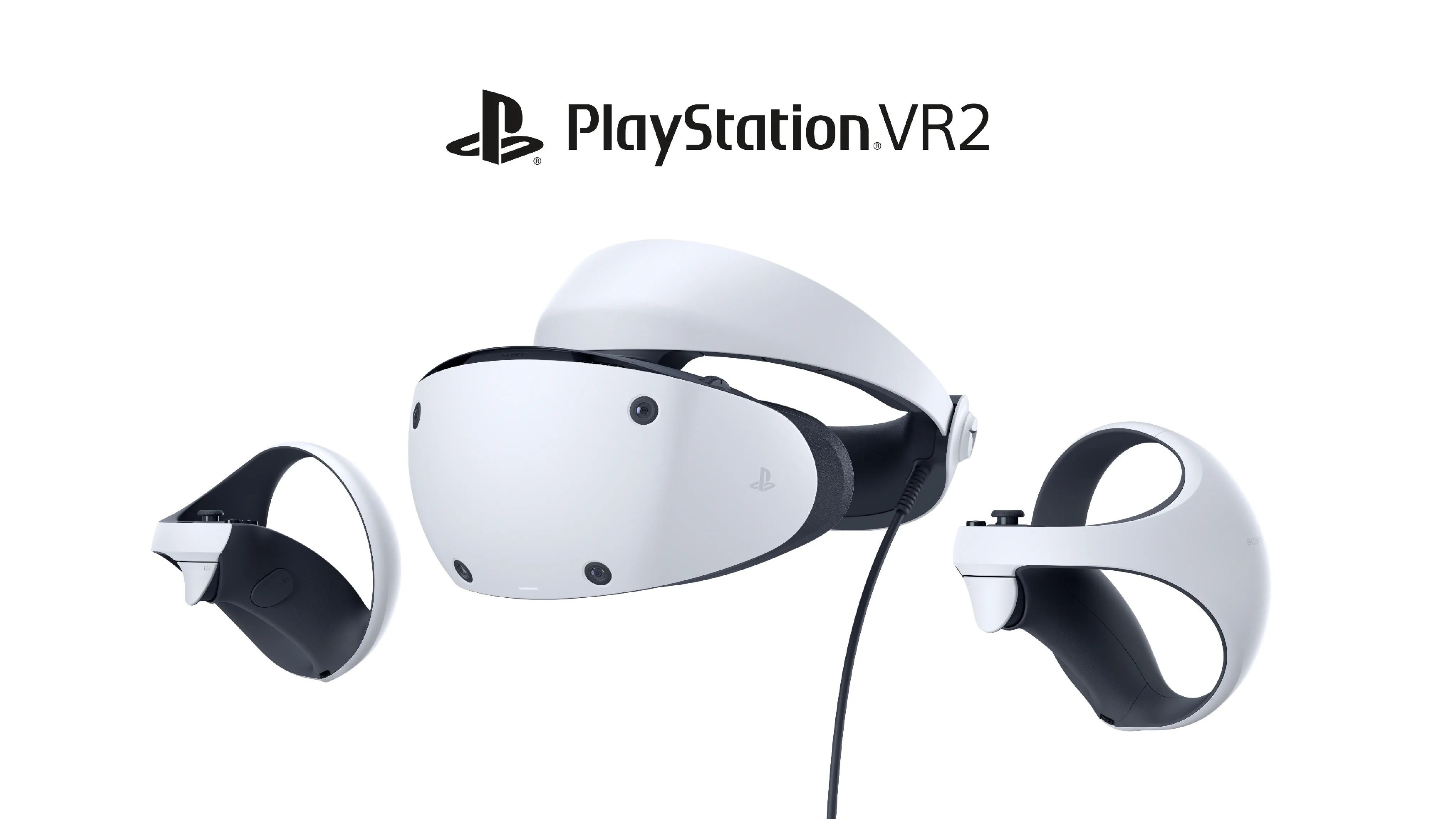Introduction
Have you ever experienced the frustration of your once snappy and efficient PC suddenly becoming slow and sluggish? It can be incredibly frustrating and impact your productivity and overall user experience. But why does this happen?
There can be several reasons why your PC is slow all of a sudden. It could be due to malware infections, lack of disk space, outdated software, excessive background processes, insufficient RAM, fragmented hard drive, overheating, corrupted or failing hardware, internet connection issues, or the presence of bloatware and unnecessary programs.
In this article, we will explore each of these potential culprits in detail, helping you understand why your PC is suddenly slow and how you can address the issue to restore its performance.
By identifying the root cause of the slowdown, you can take the necessary steps to optimize your PC’s performance and ensure smooth operation.
So, let’s dive into the various factors that could be behind your PC’s sudden slowdown and learn how to overcome them.
Malware Infection
One of the most common reasons for a sudden slowdown in PC performance is a malware infection. Malware, such as viruses, spyware, or adware, can enter your system through various means, such as infected email attachments, malicious websites, or software downloads from untrusted sources.
Once inside your PC, malware can consume system resources, disrupt normal operations, and even steal sensitive information. This can significantly impact your computer’s speed and responsiveness.
If you suspect that your PC is infected, it is important to run a thorough scan using reputable antivirus and anti-malware software. These tools can detect and remove any malicious programs that may be slowing down your system.
Additionally, it’s essential to keep your antivirus software up to date to ensure protection against the latest threats. Regularly scan your PC for malware and schedule automatic scans to detect any potential infections early on.
Furthermore, practice safe browsing habits and exercise caution when downloading files or clicking on links. Avoid visiting suspicious websites and only download software from official and trusted sources.
By taking these proactive measures, you can minimize the risk of malware infections and keep your PC running smoothly and efficiently.
Lack of Disk Space
Another factor that can lead to a sudden slowdown in your PC’s performance is a lack of disk space. As you use your computer over time, files and applications accumulate, taking up valuable storage space.
When your hard drive is almost full or reaches its capacity, it can cause your PC to run much slower. This is because the operating system needs disk space to store temporary files, swap files, and perform various system operations. When disk space is limited, the system has to work harder to find free space, resulting in decreased performance.
To address this issue, it is important to regularly clean up and organize your hard drive. Start by deleting unnecessary files and applications that are no longer in use. You can use disk cleanup tools that come pre-installed on your computer or utilize third-party software to free up disk space.
In addition to removing unneeded files, consider transferring large files to an external storage device or cloud storage to free up even more space. Clear your browser cache, delete temporary files, and empty the recycle bin regularly to maximize available space.
Furthermore, it’s a good idea to monitor your disk space usage regularly and ensure that you have a reasonable amount of free space. Aim to keep at least 10-15% of your hard drive capacity free to ensure optimal performance.
By maintaining adequate disk space and regularly cleaning up your hard drive, you can prevent sluggishness caused by insufficient storage and enjoy a smoother and more responsive PC experience.
Outdated Software and Drivers
Outdated software and drivers can also contribute to a sudden slowdown in your PC’s performance. Over time, new updates and patches are released by software developers and hardware manufacturers to address bugs, security vulnerabilities, and performance issues.
If you are running outdated software or drivers, it can result in compatibility issues, system conflicts, and decreased overall performance. Outdated drivers, in particular, can cause hardware components to work inefficiently or not at all, impacting your system’s speed and responsiveness.
To combat this, regularly check for updates for all your installed software applications and drivers. Most software programs have an automatic update feature that you can enable, ensuring that you have the latest version installed.
For drivers, you can either manually visit the manufacturer’s website and download the latest drivers, or use driver update software that can automatically scan your system and update the necessary drivers.
Additionally, it’s important to uninstall any outdated or unused software from your PC. This not only frees up valuable disk space but also reduces the potential for conflicts and improves overall system performance.
By keeping your software and drivers up to date, you can optimize your PC’s performance and ensure that it operates at its full potential.
Too Many Background Processes
If you notice that your PC is running slower than usual, it’s possible that too many background processes are running simultaneously, consuming valuable system resources. Background processes include various applications and services that run in the background even when you’re not actively using them.
Some of these processes are necessary for the proper functioning of your operating system and installed applications. However, having an excessive number of background processes can lead to a significant slowdown in your PC’s performance.
To address this issue, you can start by identifying the unnecessary or resource-intensive background processes. On Windows, you can access the Task Manager by pressing Ctrl+Shift+Esc or right-clicking on the taskbar and selecting “Task Manager.” In the Task Manager, navigate to the “Processes” tab to view the running processes and the resources they are utilizing.
Look for processes that you don’t recognize or that are using a significant amount of CPU, memory, or disk usage. Right-click on these processes and select “End task” to terminate them. However, exercise caution and avoid ending processes that are critical to the operation of your system or installed software.
In addition to manually terminating unnecessary processes, you can also use third-party software that can help manage and optimize background processes. These applications can provide more detailed information about running processes and offer options to prioritize or restrict their resource usage.
By reducing the number of background processes and optimizing their resource usage, you can enhance your PC’s performance and ensure that it runs smoothly without unnecessary slowdowns.
Insufficient RAM
Insufficient Random Access Memory (RAM) can significantly impact your PC’s performance and lead to a sudden slowdown. RAM is a type of fast and temporary memory that your computer uses to store data that is actively being used by the operating system and applications.
If your PC has limited RAM, it can struggle to handle multiple tasks simultaneously, causing delays and sluggishness. When the physical memory is full, the system relies on slower virtual memory, which is stored on the hard drive. This results in slower performance as the hard drive is much slower compared to RAM.
To address this issue, you can consider upgrading your RAM. Identify the maximum amount of RAM your motherboard supports and purchase additional RAM modules accordingly. Adding more RAM will allow your computer to handle more data simultaneously, reducing the need for the system to rely on slower virtual memory.
Before purchasing new RAM, it’s a good idea to check the requirements of the software applications you frequently use. Some resource-intensive applications, such as video editing software or modern video games, may require more RAM to run smoothly.
In addition to increasing your RAM, you can try closing unnecessary applications or processes to free up memory. Limiting the number of open browser tabs, closing unused background applications, and disabling unnecessary startup programs can help conserve RAM and improve overall performance.
By ensuring that you have sufficient RAM and managing the memory usage effectively, you can minimize slowdowns caused by inadequate memory and enjoy a faster and more responsive PC experience.
Fragmented Hard Drive
A fragmented hard drive can contribute to a sudden decline in your PC’s performance. When files are stored on a hard drive, they can become fragmented over time, meaning that different parts of the same file are scattered across different physical locations on the disk.
This fragmentation occurs as files are created, modified, and deleted, leading to gaps and fragmented data on the hard drive. As a result, the computer’s read and write speeds are reduced since the system has to search for and retrieve scattered file fragments.
To address this issue, you can use the built-in disk defragmentation tool on your operating system. On Windows, this tool is called “Disk Defragmenter.” It works by rearranging the fragmented files and consolidating them into contiguous blocks. This improves file access speed and overall system performance.
It’s important to note that solid-state drives (SSDs) do not need to be defragmented, as the file access mechanism is different from traditional hard drives. Defragmentation is specifically for mechanical hard drives.
Regularly running the disk defragmentation tool can greatly improve the performance of your hard drive. It is recommended to schedule automated defragmentation to occur at regular intervals, or you can manually initiate the process when you notice a significant decline in performance.
In addition to defragmentation, it’s essential to keep your hard drive organized by regularly deleting unnecessary files and programs. This helps prevent excessive fragmentation and ensures smoother file access.
By defragmenting and organizing your hard drive, you can optimize the performance of your PC and experience faster data access, file loading, and overall system responsiveness.
Overheating
Overheating can be a significant factor contributing to a sudden slowdown in your PC’s performance. When your computer’s internal components, such as the CPU (Central Processing Unit) or GPU (Graphics Processing Unit), become too hot, it can trigger thermal throttling. Thermal throttling is a protective measure that reduces the performance of these components to prevent damage.
Several reasons can lead to overheating, including a buildup of dust and debris in the cooling system, a malfunctioning or inadequate cooling fan, or improper airflow within the case.
To address overheating issues, it’s important to regularly clean the cooling system and remove any accumulated dust or debris. Use compressed air or a soft brush to gently clean the cooling vents, fans, and heat sinks. This will allow for better air circulation and heat dissipation.
Check if the cooling fan is running properly and that it is not obstructed. In some cases, the fan may need to be replaced if it is no longer functioning adequately. Additionally, ensure that the computer is placed on a flat, stable surface to allow for proper airflow and ventilation.
You can also use software tools to monitor the temperature of your components and adjust fan speeds. These tools can help you identify any overheating issues and take appropriate action to prevent performance degradation.
It’s worth noting that overclocking your CPU or GPU can also increase heat generation. If you have overclocked your components, consider reverting to the default settings or reducing the overclocked settings to reduce the heat output.
By addressing and mitigating overheating issues, you can maintain optimal performance and prevent unexpected slowdowns caused by thermal throttling. Regular maintenance, proper cooling, and monitoring can help ensure that your PC runs smoothly and efficiently.
Corrupted or Failing Hardware
Corrupted or failing hardware can lead to a sudden decline in your PC’s performance. Hardware issues can manifest in various ways, such as frequent crashes, error messages, slow startup times, or system freezes.
There are several hardware components that can potentially cause performance issues. Some common culprits include a failing hard drive, faulty RAM modules, a malfunctioning graphics card, or a problematic power supply unit.
If you suspect that hardware issues are the cause of your PC’s slowdown, it is essential to diagnose and address the problem promptly. Start by running hardware diagnostics tools, which are often provided by the manufacturer or available for download on their website. These tools can help identify any malfunctioning or failing components.
If you determine that a specific hardware component is causing the performance issues, you may need to replace the component. For example, if your hard drive is failing, backing up your important data and replacing the drive is crucial to avoid potential data loss and restore system performance.
For more complex hardware issues, it’s advisable to seek professional assistance from a computer technician or a reputable repair service. They have the expertise to diagnose and fix hardware-related problems effectively.
Preventing hardware issues can be done through regular maintenance and proper care. Keep your computer clean and dust-free to avoid overheating and potentially damaging the hardware. Handle your PC with care and avoid sudden impacts or drops that can cause physical damage to the components.
By addressing and resolving corrupted or failing hardware, you can restore your PC’s performance and ensure its smooth operation.
Internet Connection Issues
Internet connection issues can be a common cause of sudden slowdowns in your PC’s performance, especially if your activities heavily rely on an internet connection.
When your internet connection is unstable or experiencing problems, it can significantly impact your browsing speed, download/upload speeds, online gaming experience, and overall online tasks.
There are several factors that can contribute to internet connection issues. It could be due to a problem with your Internet Service Provider (ISP), network congestion, a faulty modem or router, outdated network drivers, or even wireless interference.
To troubleshoot and resolve internet connection issues, there are several steps you can take:
1. Check all physical connections: Ensure that all cables connected to your modem, router, and PC are securely plugged in. A loose or damaged cable can cause intermittent connection problems.
2. Restart your modem and router: Power off your modem and router, wait for a few seconds, then power them back on. This process can help refresh the network connection and resolve temporary issues.
3. Update network drivers: Check if there are any updated drivers available for your network adapter. Outdated drivers can sometimes cause connectivity problems. Visit the manufacturer’s website or use driver update software to ensure you have the latest drivers installed.
4. Check for wireless interference: If you are using a Wi-Fi connection, other devices or electronic appliances near your router can cause interference. Keep your router away from such devices or use a different wireless channel to minimize interference.
5. Contact your ISP: If the issue persists, it may be a problem with your ISP. Contact their technical support to report the issue and seek assistance.
By troubleshooting and addressing internet connection issues, you can improve the performance of online activities, ensuring a seamless and efficient browsing experience on your PC.
Bloatware and Unnecessary Programs
Bloatware and unnecessary programs can significantly impact your PC’s performance by consuming system resources and causing delays. Bloatware refers to pre-installed software that comes bundled with your computer or is installed by third-party applications without your consent.
These programs often run in the background, hogging valuable system resources such as CPU, memory, and disk space. As a result, your PC can become slow and unresponsive.
To address this issue, it’s essential to identify and uninstall any unnecessary or unwanted programs. Start by reviewing the list of installed programs on your computer and determine which ones you actually use or need.
You can access the list of installed programs on Windows by going to the “Control Panel” and selecting “Programs” or “Add/Remove Programs.” On macOS, go to “Applications” in the Finder and drag unwanted applications to the Trash.
When uninstalling programs, pay attention to any prompts that may try to convince you to keep the software or install additional bundled tools. Be cautious and only remove programs that you are certain you no longer need.
In addition to bloatware, it’s crucial to regularly review and remove unnecessary startup programs. These are applications that automatically launch when you turn on your PC. They can significantly slow down the startup process and consume system resources.
You can manage startup programs on Windows by accessing the “Task Manager” and going to the “Startup” tab. On macOS, navigate to “System Preferences,” then “Users & Groups,” and select your username. From there, go to the “Login Items” tab to manage startup programs.
By removing bloatware and unnecessary startup programs, you can free up system resources and improve your PC’s performance. It’s also a good idea to periodically review your installed programs and uninstall any that you no longer use.
Remember to exercise caution when installing new software and be mindful of any optional installations or bundled programs. By being selective with your software choices, you can maintain a clean and efficient PC environment.
Conclusion
Experiencing a sudden slowdown in your PC’s performance can be incredibly frustrating. However, by understanding the potential culprits and taking proactive measures, you can restore your PC’s speed and efficiency.
In this article, we explored several factors that can contribute to a sudden slowdown, including malware infections, lack of disk space, outdated software and drivers, excessive background processes, insufficient RAM, fragmented hard drives, overheating, corrupted or failing hardware, internet connection issues, and the presence of bloatware and unnecessary programs.
To address these issues, consider running regular malware scans, cleaning up your hard drive, keeping software and drivers up to date, managing background processes, ensuring sufficient RAM, defragmenting your hard drive, preventing overheating, addressing hardware issues promptly, and troubleshooting internet connection problems.
It’s also important to be aware of bloatware and unnecessary programs, uninstalling them to free up system resources. By adopting these practices, you can optimize your PC’s performance and enhance your overall user experience.
Remember to practice regular maintenance, such as cleaning your PC, organizing files, and performing routine checks, to keep your computer running smoothly.
By addressing the underlying causes of a sudden slowdown and taking proactive measures to optimize your PC’s performance, you can enjoy a smooth, efficient, and enjoyable computing experience.

























